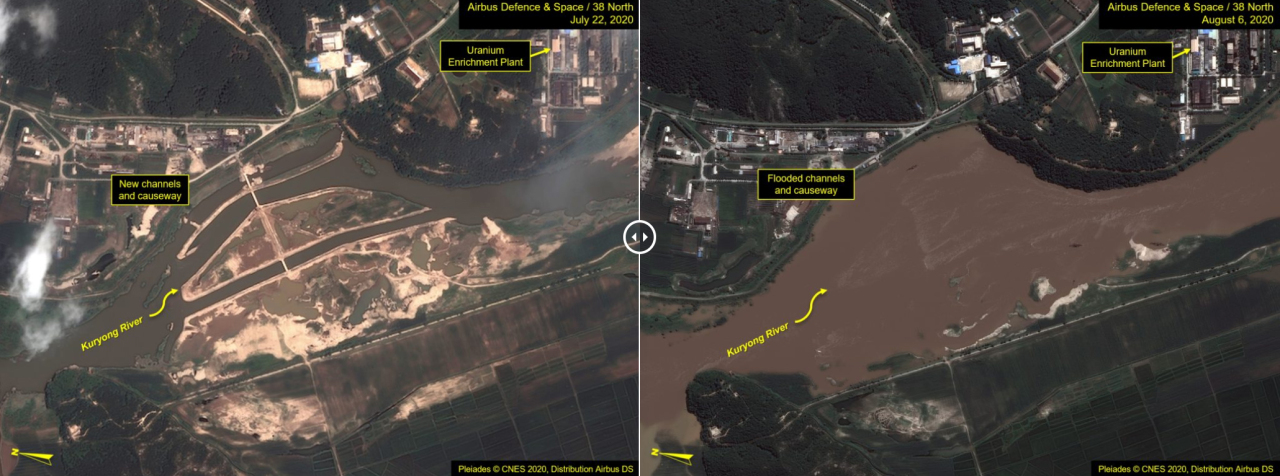Significant flooding in NK may have damaged Yongbyon nuclear complex: 38 North
By Ahn Sung-miPublished : Aug. 13, 2020 - 15:20

Flooding in North Korea may have damaged the facilities at the Yongbyon nuclear complex, the communist regime’s main nuclear facility, a US-based North Korean monitoring website said Thursday.
Comparing satellite images of the region taken July 22 and Aug. 6, the website, 38 North, said they show a dramatic rise in the water level of the Kuryong River, which runs alongside the Yongbyon complex, and that the flooding appears to be the worst the North has seen in several years.
“Although the security wall around the reactor complex was not breached, the water had reached the two pump houses that service the reactors and completely submerged their respective bases,” it said.
“The overfall dam that was built to ensure a constant reservoir of water and is available for cooling the reactors was also fully underwater.”
The website, revealing satellite images of a fully submerged dam on the river, added that damage to the complex’s pumps and piping system could force the shutdown of the reactors, if they are operating.
It said the 5-megawatt reactor, which produces weapons-grade plutonium, does not appear to have been operating for quite some time, and the Experimental Light Water Reactor has yet to come online.
“Damage to the pumps and piping within the pump houses presents the biggest vulnerability to the reactors,” the report said. “If the reactors were operating, for instance, the inability to cool them would require them to be shut down.”
Seoul’s Unification Ministry said it had no comment on the report, while the Defense Ministry said it continues to keep an eye on North Korea’s nuclear and missile activities.
The North has been hit hard by torrential downpours this year, with floods and landslides causing widespread damage across the country. The Unification Ministry said the North appears to have received more rainfall this month than during the same period in 2007, when the country suffered its worst floods.
By Ahn Sung-mi (sahn@heraldcorp.com)







![[KH Explains] How should Korea adjust its trade defenses against Chinese EVs?](http://res.heraldm.com/phpwas/restmb_idxmake.php?idx=644&simg=/content/image/2024/04/15/20240415050562_0.jpg&u=20240415144419)











![[Today’s K-pop] Stray Kids to return soon: report](http://res.heraldm.com/phpwas/restmb_idxmake.php?idx=642&simg=/content/image/2024/04/16/20240416050713_0.jpg&u=)